Last Jews of Zakarpattia
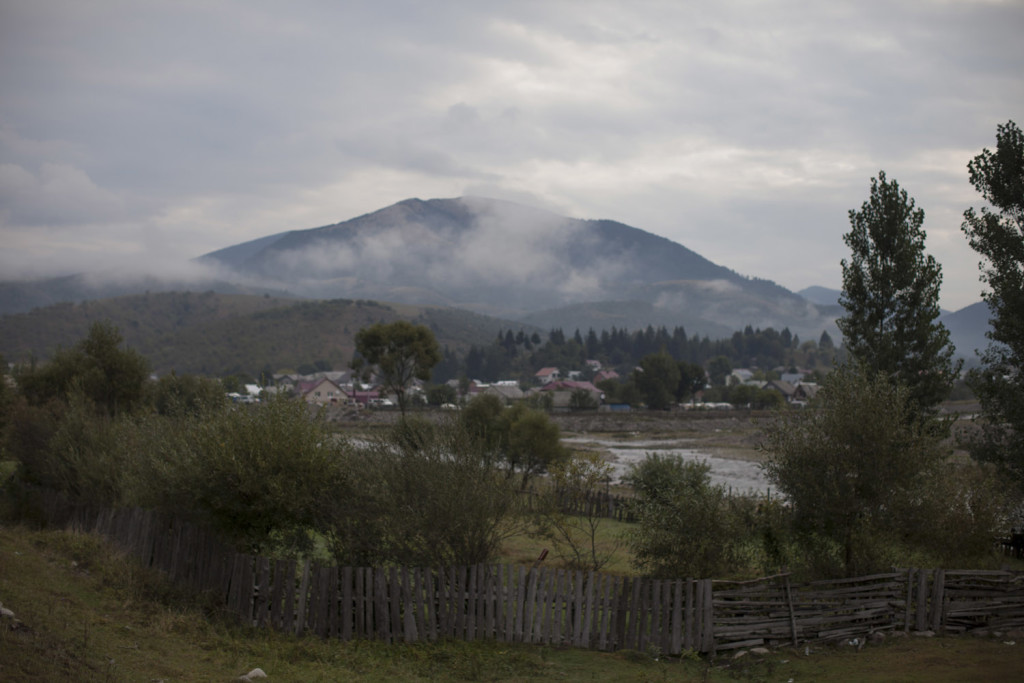
Photos by János Chialá & Tali Mayer.
Eastern Ukraine, 2014.
The southwestern Ukrainian region of Zakarpattia, laying beneath the Carpathian mountains, has always been something of a borderland, and one that often exchanged hands as the borders shifted around it: in the last century alone, it was part of the Austro-Hungarian empire, of Czechoslovakia, of Hungary, of the Soviet Union and then finally of independent Ukraine. The people that have inhabited it have been just as heterogenous: Ukrainians, Hungarians, Rusyns, Germans, Romani and Jews, lots of Jews, who maybe found themselves at home in such a geographically uncertain place.
Jewish life thrived here since the 15th century, as local rulers allowed the Jews to own land and practice many trades that were precluded to them in the rest of Europe. They lived in both the towns and the countryside, farmed the land, spoke the local languages and lived more or less peacefully alongside with their neighbours. Zakarpattia, in fact, was one of the few places in Central and Eastern Europe never to have experienced a pogrom. Often seeking refuge from persecution across the borders, Jews settled in Zakarpattia and established communities that built great synagogues, schools, printing houses, businesses, vineyards and bars. In the complex tapestry of nationalities and identities that was central Europe, the Jews were fully integrated in Zakarpattia’s life: by the end of the 19th century there were as many as 150,000 Jews living in the region.
This tapestry would be completely unravelled by the rise of Nazi Germany and its attempt to redraw all borders along clear, racial lines. For the Jews of Zakarpattia, the border was the one between life and death, and it would cut across their history forever, marking the clear separation between the times ‘before’ and ‘after’ the Holocaust.
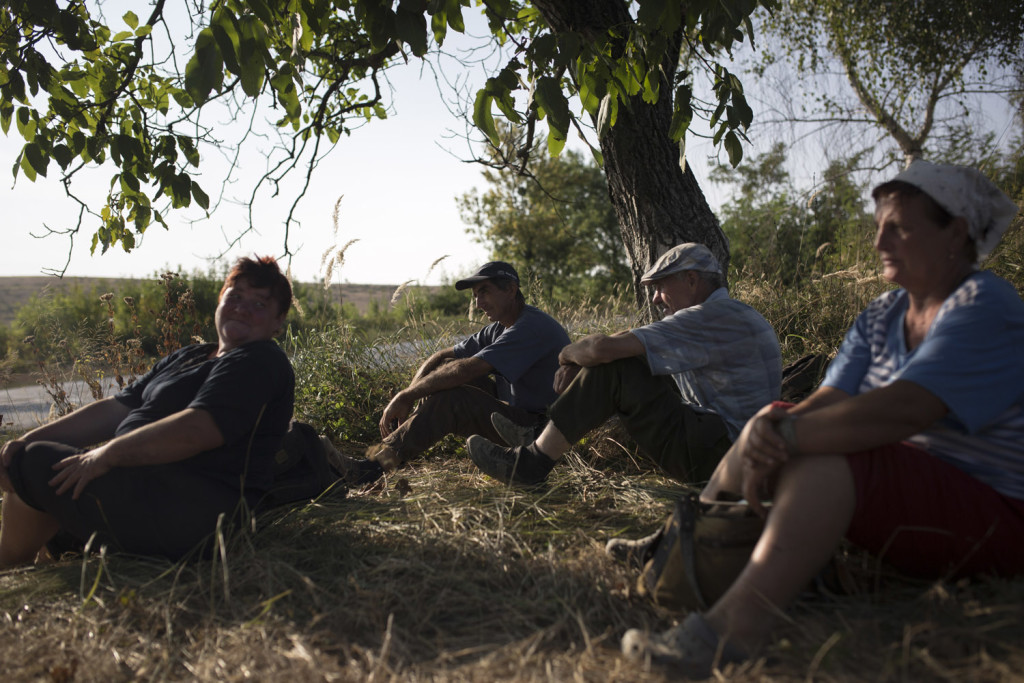
Tilda Halpert, born in 1923 in Mukacheve, has lived through both times and she has invited us to her apartment to talk about it. “You don’t keep kosher, do you,” she asks worriedly before ushering us into the living room. When we answer that we don’t, she responds: “Goddverdankt (thank God, in Yiddish), I wouldn’t have anything kosher to offer you.” She serves us coffee and biscuits, and at first doesn’t understand our questions about relations between Jews and non-Jews before the war. “Back when were all living in Czechoslovakia, our relations with non-Jews were absolutely normal,” she says. “Maybe some kids used to call me a dirty Jew, but we were just playing, and all the children played together.” In her childhood, the Jews lived all across the city and when the Jews came out of the synagogues on Shabbat, the promenades alongside the river turned black with their hats. “My father used to work in a village nearby that was half Jewish and half German. It was all good with the Germans, until Hitler awoke their nationalism.” Once awake, this beast immediately set upon dismantling the world Tilda had grown up in.
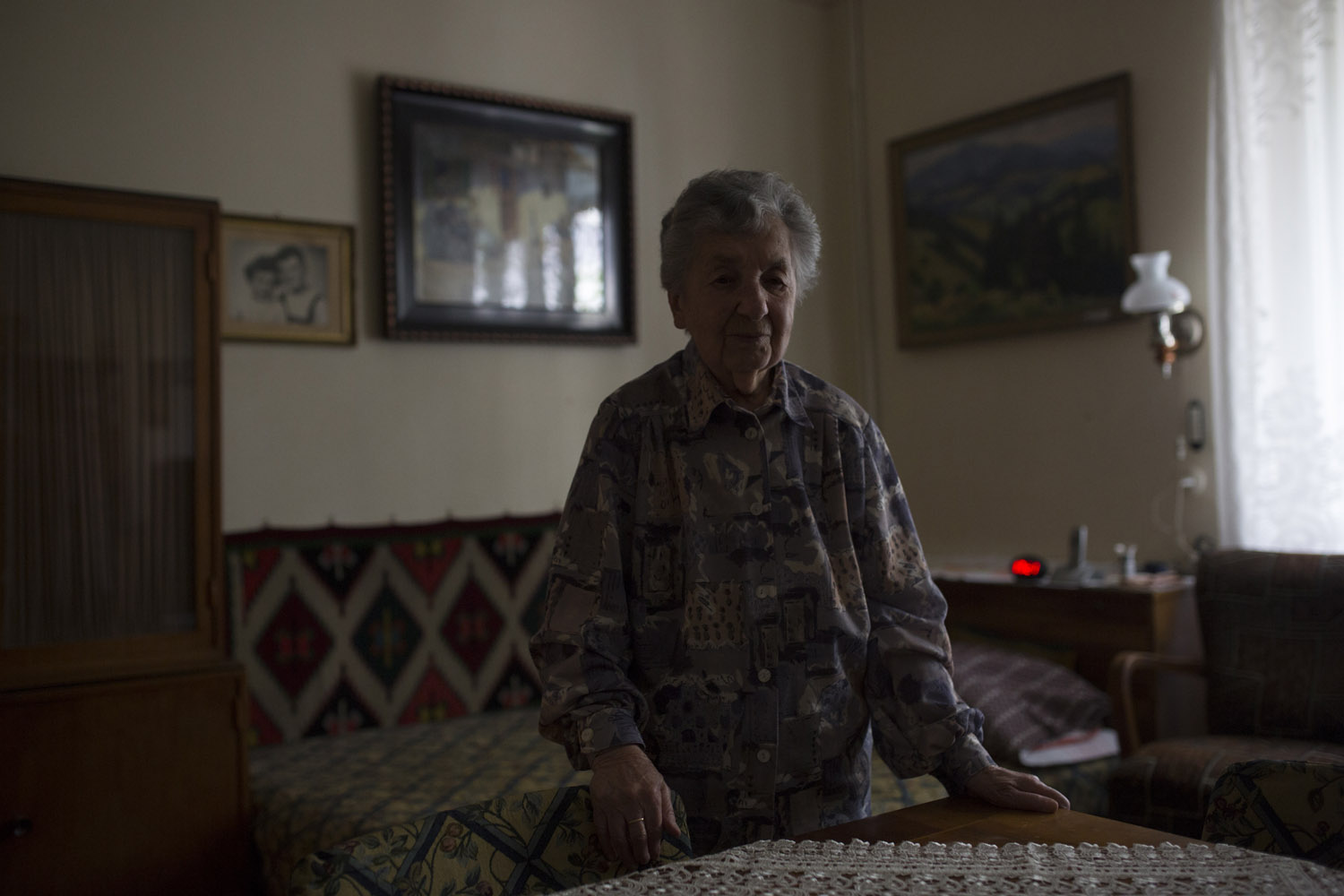
By 1939 Nazi Germany took over most of Czechoslovakia, fascist Hungary occupied Zakarpattia and war had became inevitable. When in 1941 the Germans began physically exterminating those they deemed racially inferior, Hungary expelled all Jews without citizenship, handing more than 20,000 Zakarpattian Jews to be massacred by SS death squads in the forest of Kaminets Podolsk. In 1944 German troops occupied Hungary, and although by this point in the war Germany was retreating on all fronts, military defeat only made Hitler’s obsession to cleanse Europe from the Jews more urgent.
Among the horrors of the Holocaust, the destruction of Hungarian Jewry stands out for its brutal pace: a Jew living in Hungary in March 1944 had about one chance in three of surviving the following 12 months, and the Jews of Zakarpattia shared in this grim fate. On the 19th, all the Jews in the region were ordered to move into ghettoes, fenced-off areas set up in towns across the region. Between May 14th and June 7th, more about 100,000 Zakarpattian Jews were loaded on trains and deported to the Auschwitz extermination camp, where most were killed in gas chambers upon arrival. Tilda was 21 years old when she was forced to board one of those trains, and she would be one of the few who would eventually return to Zakarpattia.
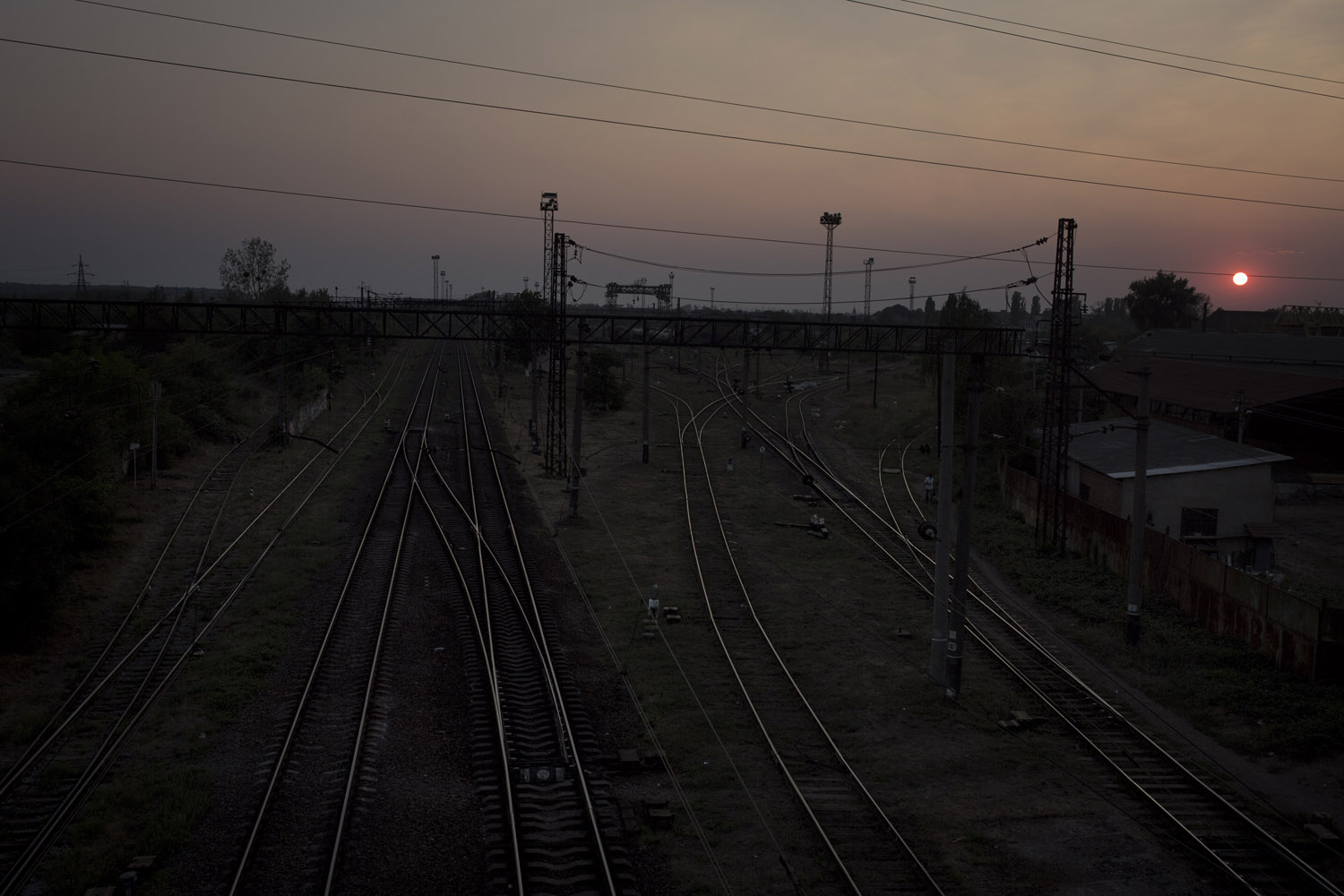
Of those who did make it through that fateful year, Stephan Abramovic Klein is the only one still living in Khust. He was born in 1928 to a family of doctors, went to a Czech school but still considers himself a Hungarian. What was to happen, he says, was unimaginable even as it was already happening: in 1943 his father invited a German patient for dinner, “who had just returned form Germany, and told us all sorts of crazy things about gas chambers and people being turned into soap. My mother got very angry, and told my father to never invite again someone who could say such things about Germany.”
But his father did believe him, and when the German soldiers arrived the Kleins escaped. They found a way out of the ghetto and drove to Budapest. As soon as they arrived there, “the Germans were going around the streets with loudspeakers, ordering all the Jews to report to the ghetto. You don’t know the fear you feel when you get such an order. The soldiers had guns, and we had nothing!” They were lucky enough to meet some Hungarian soldiers from Khust who brought them food from time to time, and survived in hiding until the city was liberated by the Red Army in February 1945.
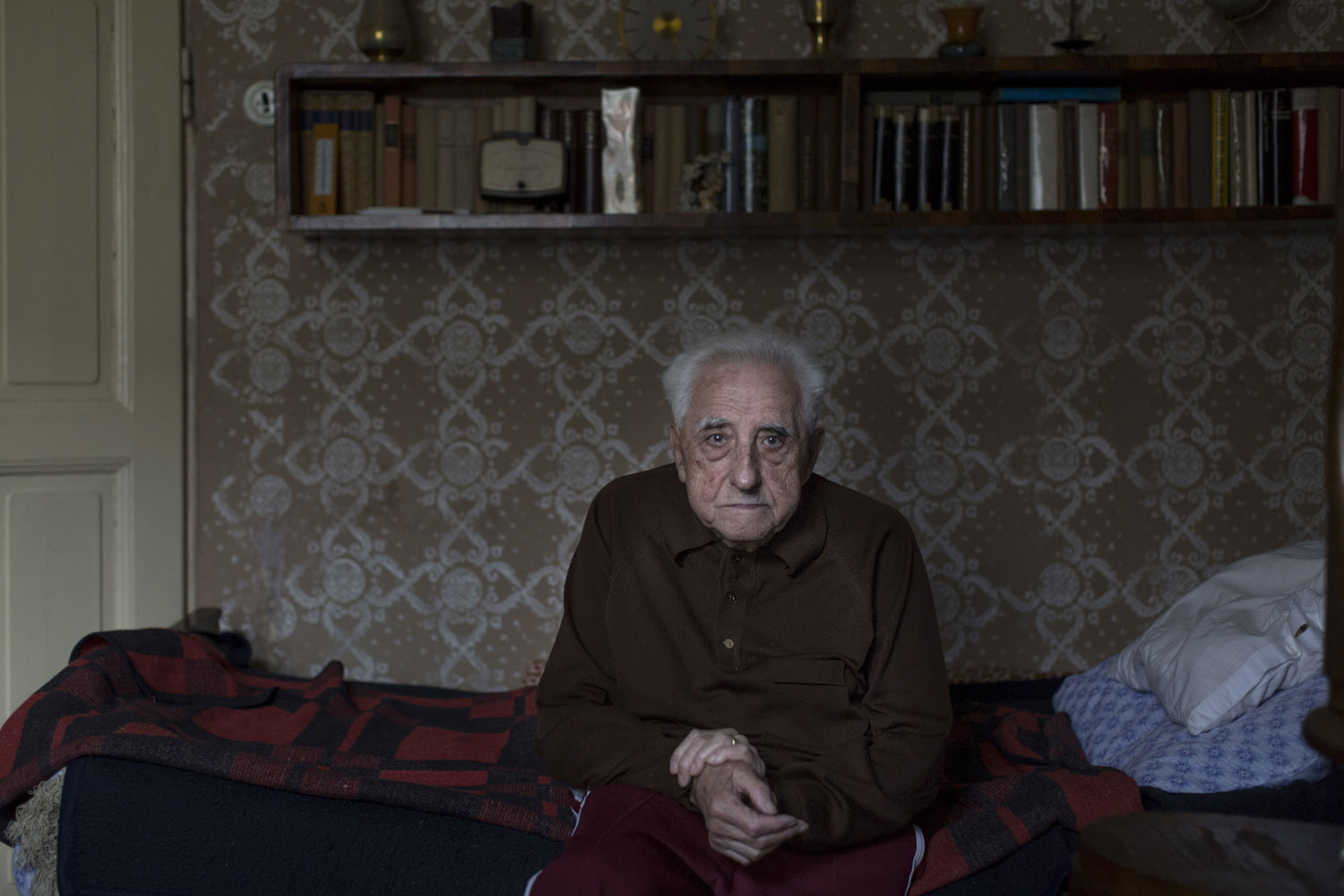
Dora Abramova Fixler was not as lucky. Born in 1924 in Solotvino, a small village on the Tisza river, she also considered herself Hungarian, yet one day Hungarian gendarmes arrested her as she walked in the street with her sister and sent them to Auschwitz, where they saw most of their friends and relatives die. After they were liberated by American soldiers, they decided to return to their village to see if anybody from their family had survived. They hadn’t, and “out of five thousand Jews who were there before the war, only about a hundred were left.” Her sister emigrated to Israel through Czechoslovakia, but by the time Dora gathered the courage to follow her, the border was sealed and she was caught by the Soviet border guards. The same thing happened to Tilda, who also returned to look for her family and was barred from leaving in 1947. She had found her house destroyed: “the neighbours thought all Jews kept gold hidden in the walls, and ripped the whole building apart.”
Klein’s family walked ten days to return to Khust, and on the way met some Jewish officers of the Red Army. “They asked us where we were going, and we answered we were going home. They told us to go West, because we didn’t know what the Soviet Union was.” Lost as they were, the refugees decided to go east anyway, then the border was closed and, in Klein’s words, “that was it.”
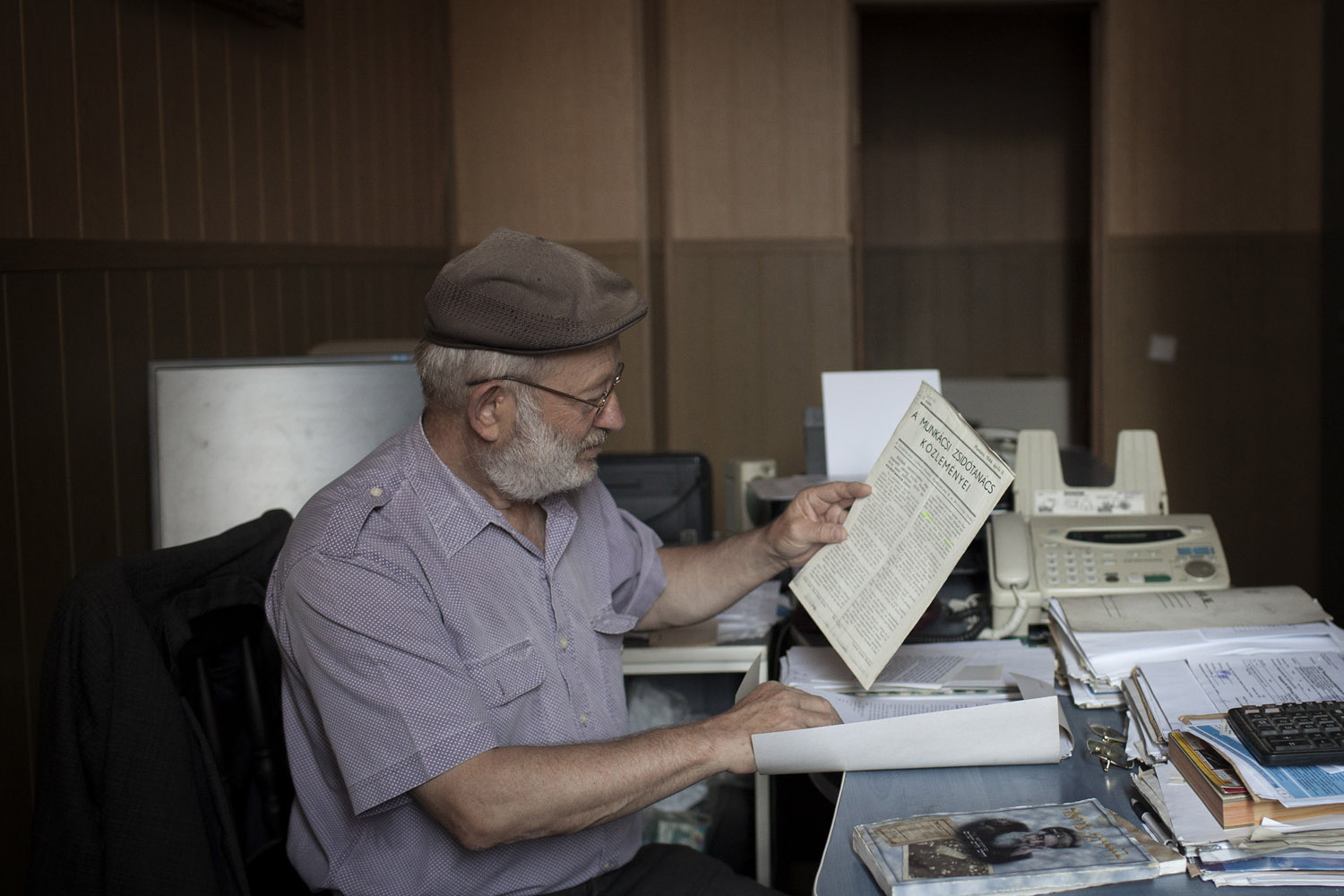
The president of Mukacheve’s Jewish community, Avraham Leibovits, shakes his head when we explain our wish to write about the past, present and future of the Jews of Zakarpattia. With such a past, he says, “the future is efes (zero, in Hebrew).” He isn’t too happy about the present either, and he adds that “now you can go into a Jew’s house and not find a single Jewish thing. Most of the Jews we have now were educated in the Soviet Union, and their wives are not Jewish. You will not find what you are looking for.”
However pessimistic, Jews still have quite a presence in Mukacheve, with two active synagogues and a community centre serving free kosher meals. There was even an active shochet (ritual slaughterer), Alexander. “Not so many people eat kosher here, so I don’t have enough customers”, he told us at the time, and since then he has moved to Israel. Ukraine’s economy has been struggling ever since the country became independent, making emigration an obvious choice, especially for Jews who are automatically granted citizenship upon making aliyah to Israel.
There is one street that is still known as the ‘Jewish street’, but only one Jew lives there today, Natasha Spiegel. Her father used to tell her stories about life before the war, “but to me it was all some strange legend, and at school they told us exactly the opposite. He wanted me to marry a Jew, but in my school we were only four Jews!” Natasha was eventually reconnected to her Jewish identity in the nineties, when Hungarian rabbi, rav Hoffmann, came to Mukacheve and reopened a synagogue.
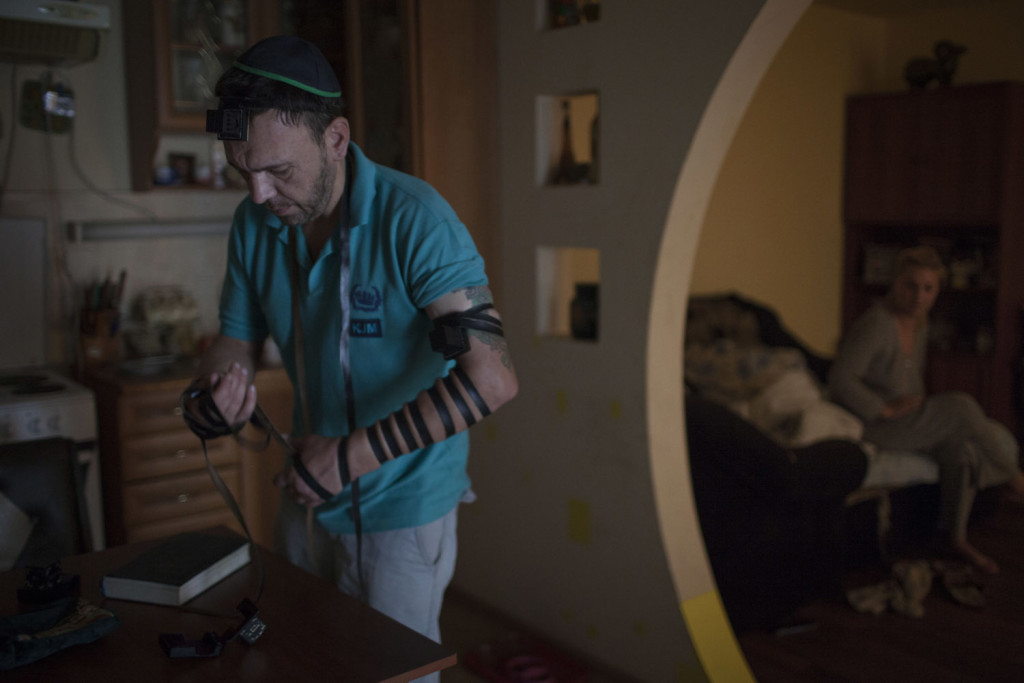
The best person to tell the story of rabbi Hoffmann is Esther, who today is the one to make sure that Mukacheve’s other synagogue is open on shabbat. “Before rabbi Hoffmann there was nothing here, nothing”, she says, “while before the war there were sixteen official communities, each with its own synagogue.” Esther’s father was a shochet, and after the war he worked in a Soviet meat factory, secretly preparing kosher meat. Then rabbi Hoffmann finally arrived from Kyiv in 1989, and he literally had to start from scratch.
After a long legal struggle, he got the synagogue back and then managed to raise the funds to restore it. “He taught us basic Hebrew so we could pray, and arranged for the men to finally have their bar mitzva.” However, Hoffmann believed that there was no future for Jews in Zakarpattia. “He wanted everybody to move to Israel, if they were to remain Jews. Eighty percent of our community left, but I was too old and I do not like to fly on planes.” Hoffmann’s community eventually lost ownership of the synagogue, which was taken over by the official, better-funded Jewish community, and then the rabbi died leaving his followers without a guide. “Nobody knows what the future will be”, concludes Esther, “but it will not be good. The old will die and the young will move to Israel.”
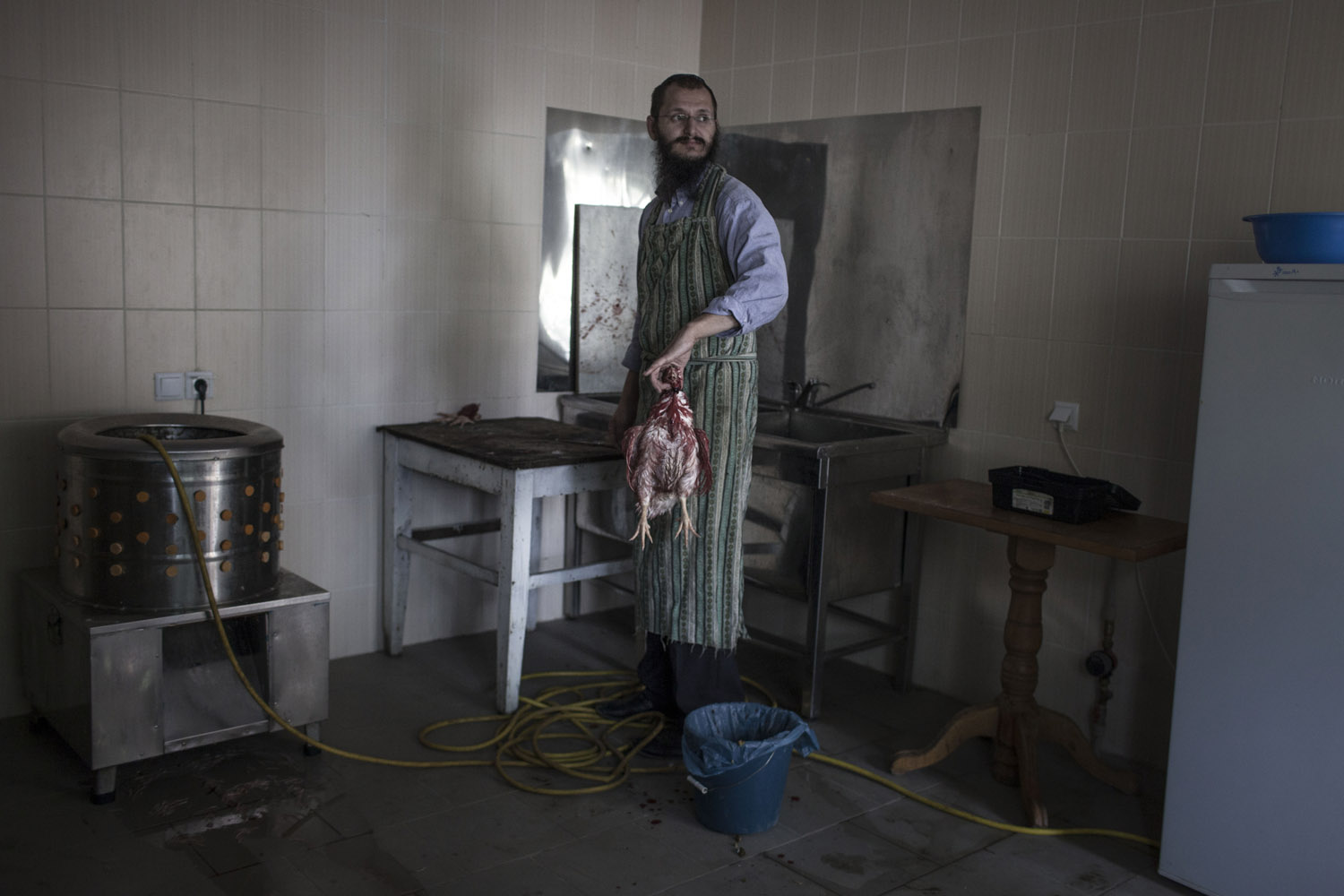
The town of Uzhhorod has an active synagogue and Hesed Shapira, an NGO devoted to sustain Jewish identity and provide care for elderly Jews. However, identity itself is a complicated concept, in Zakarpattia, as we witnessed at the funeral of an old Jewish woman. She had been married to a non-Jew and did not raise her children as Jews, so the procession just passed by the synagogue on the way to the Christian cemetery, where she was buried next to her husband. “My mother was Jewish”, her daughter Tamara said, “but I don’t know what I am. I guess I am just Carpathian.”
A kosher bakery was recently opened by twenty-four years old Aaron Levitz, from New York. “Under Communism, it was food that kept Judaism alive here – people could not go to a synagogue, but could still eat gefilte fish.” He moved to Ukraine after becoming fascinated with the country’s great Jewish mystics such as the Baal Shem Tov, who roamed the Carpathians performing miracles and healing Jewish farmer, and runs the bakery with Shimon, a local, whose mother did not tell him about her Jewish heritage until he was a teenager. “In the Soviet Union nationality came from the father, and my father was Russian, so I always thought I was Russian. Then I discovered I was Jewish, and now I try my best to keep the traditions. In the Soviet Union there was no religion, no identity, there was only Communism, and look where that got us.”
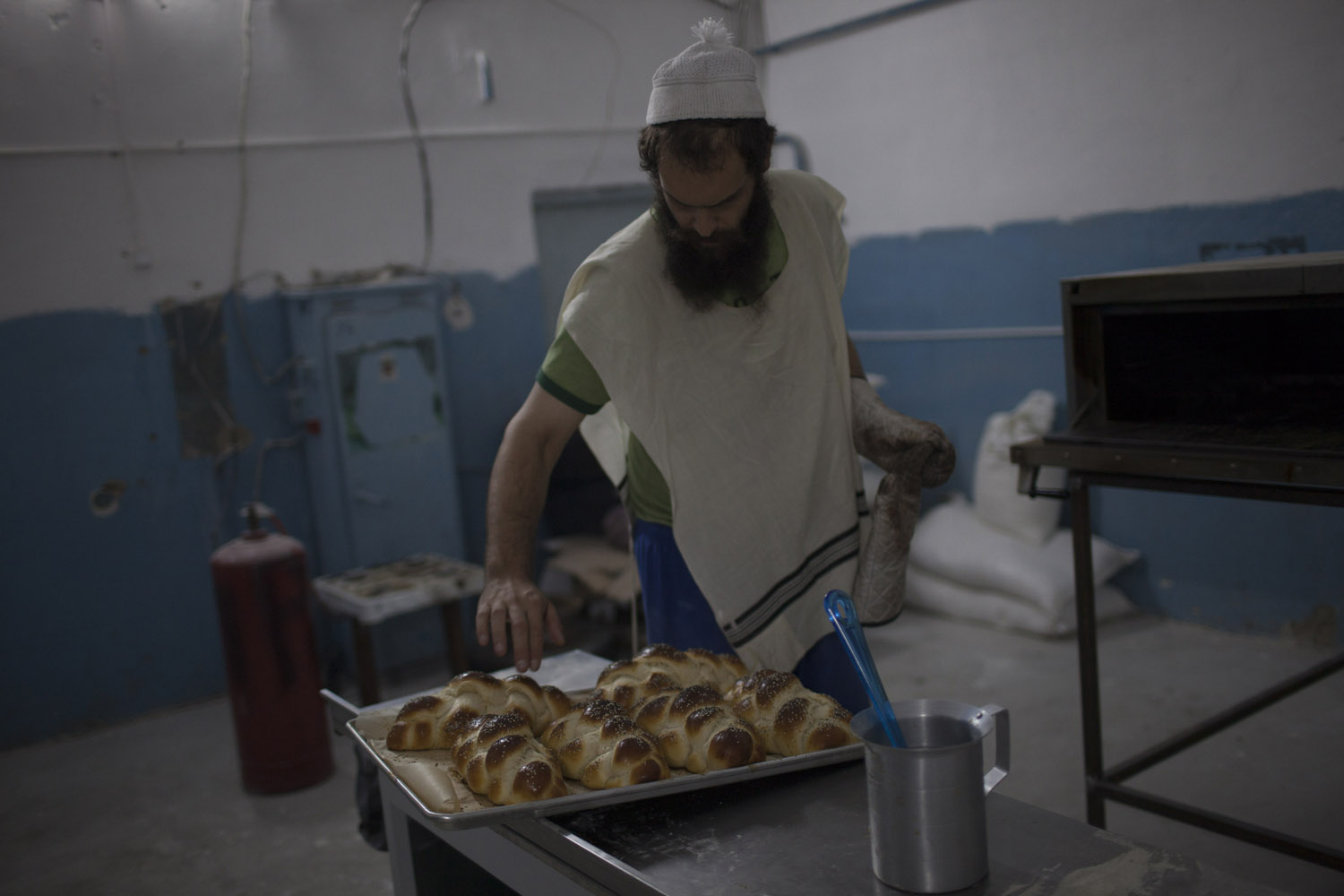
The effects of sixty years of state-mandated atheism are quite visible in the synagogue of Khust, where we have been invited to take part in the celebration of the shabbat, so that for once there might be someone able to read the texts in the original Hebrew. As the function goes on, cellular phones ring one after the other – quite a serious infraction of the shabbat, on which the use of electronic devices is strictly forbidden. “Anyway, I am not religious”, Klein tells us, “I come here because I don’t want the community to end.”
As he shows us the synagogue, the president of the community Vova Katz explains that he needs “a million dollars to restore it, and where will we find them?” In the huge hall decorated with oriental arabesques, rows of prayer stalls stand deserted, and hundred of books are piled on dusty shelves. “People keep finding Jewish books in their houses, and they bring them here, in the hope that we might know what to do with them.”
After the prayers, he invites us to his house to meet his mother. She was born in the east of Ukraine, and moved to Zakarpattia sixty years ago, as part of the Soviet efforts to ‘Russify’ the region. Her granddaughter moved to Israel, and is raising her own daughter there, but Vova’s mother speaks to her every day, thanks to a laptop and a skype account provided by Hesed Shapira.
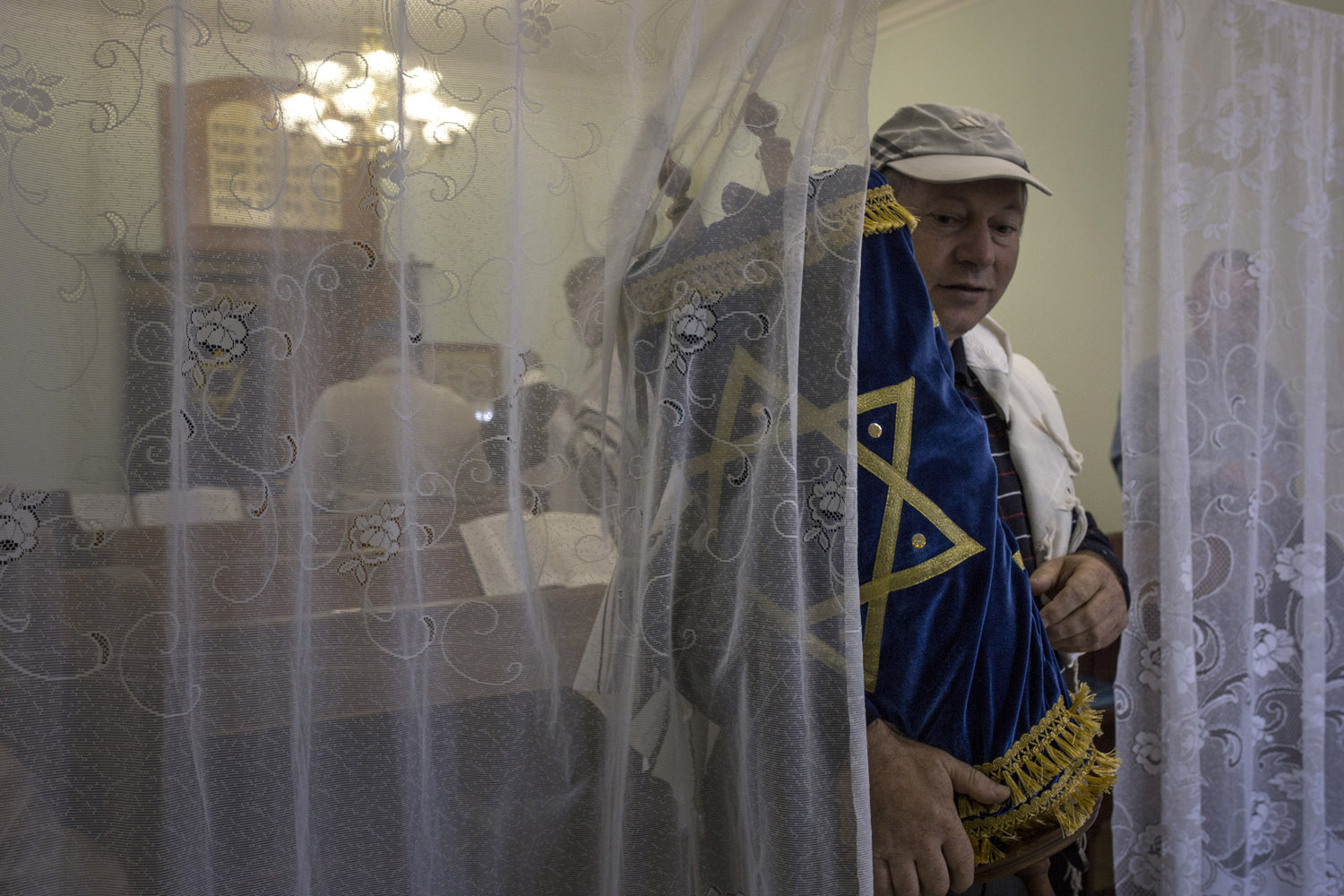
It is said about the Baal Shem Tov, like of many other Jewish mystics that made the history of Judaism, that if you believe the stories about him, it means you are stupid, and that if you don’t believe them, it also means you are stupid. “It must have been the same with the Soviet Union”, Aaron reflects as we drink a beer in the middle of the baker’s long night of work baking challah for the coming Shabbat, “if you believed in it, it meant you didn’t have a heart. And if you didn’t believe in it, you did not have a heart either.” Whatever one’s opinions about the Soviet Union are today, the landscape it has left in its wake is not pretty and mass emigration, which its sealed borders had tried so hard to prevent, has been one of its hallmarks. But in the post-Soviet spaces, the displacement is not only one of geography but also one of identities, as people try to fill the void left behind by Communism.
Some do it by discovering their Jewish roots, as did forty-five years old Vasily Gritzik, who comes to synagogue in Khust but is not yet formally a Jew. “I read Marx when I was young, and I can tell you that he didn’t have anything to do with the Soviet Union.” Then, when he grew up, his neighbours told him that his grandparents had been Jewish, and he felt he could finally “find answers for the higher questions. Here in Ukraine we are all lost souls.”
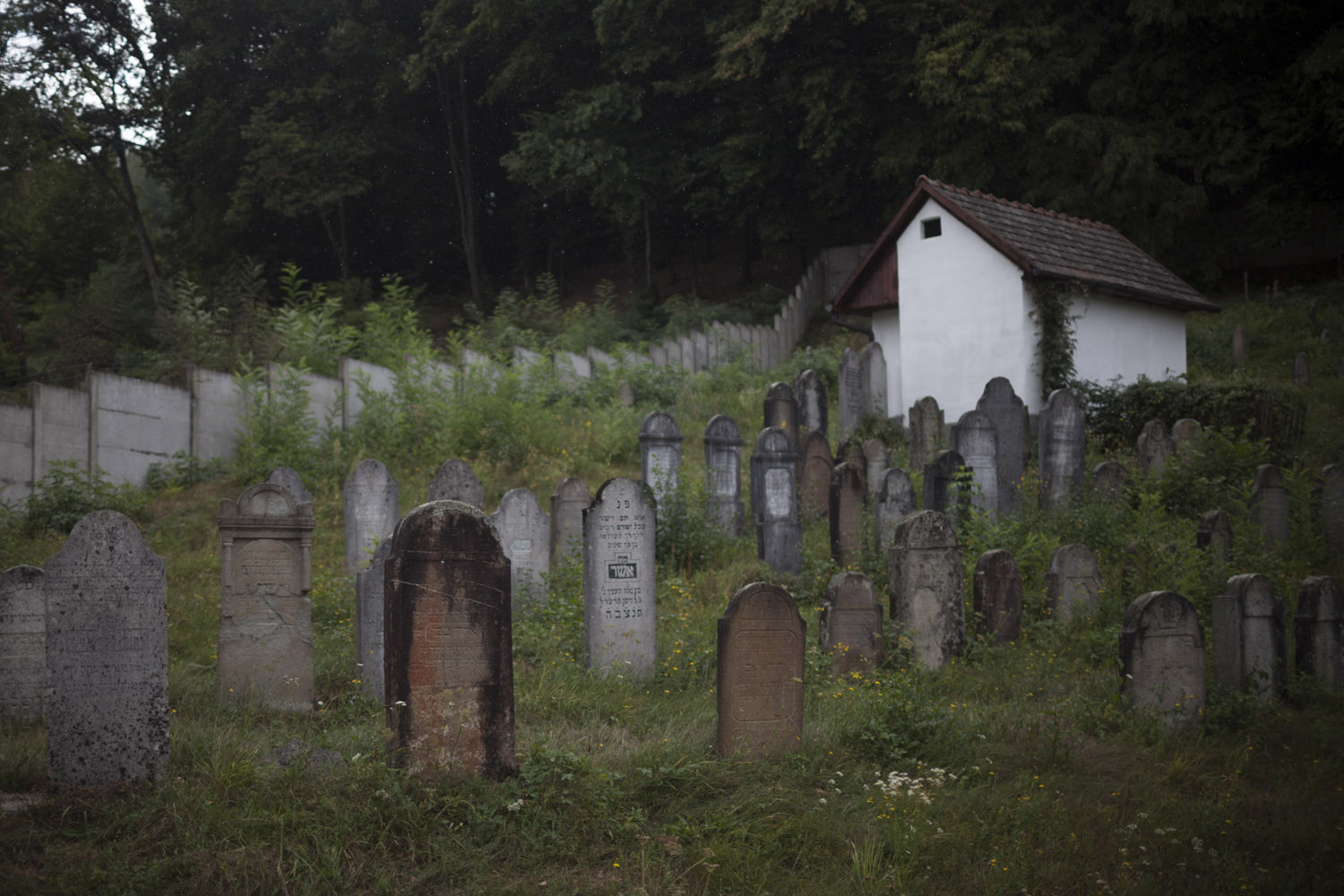
Today, but a few thousands Jews remain in what used to be great communities. You can walk through the streets of Mukacheve, a place once known as das Klein Yerushalayim (the little Jerusalem, in Yiddish) and where the wedding of rabbi Chaim Elazar Shapira’s daughter in 1933 drew as many as 20,000 guests from as far as America, and not see a single Jew. In many places, the only Jews you can find are the ones whose names are engraved on tombstones or memorials to this or that deportation.
Grandiose synagogues are standing empty and in need of repairs, and the cemeteries are overgrown with weeds. Yet Jewish life carries on, and some Jews still gather on shabbat and the holidays, often in their assimilated, half-Christian families, without speaking a word of Hebrew or sharing their table with hopeful converts. The old will die and the young might move to Israel, but the traditions are alive and so is the story of the Jews of Zakarpattia.
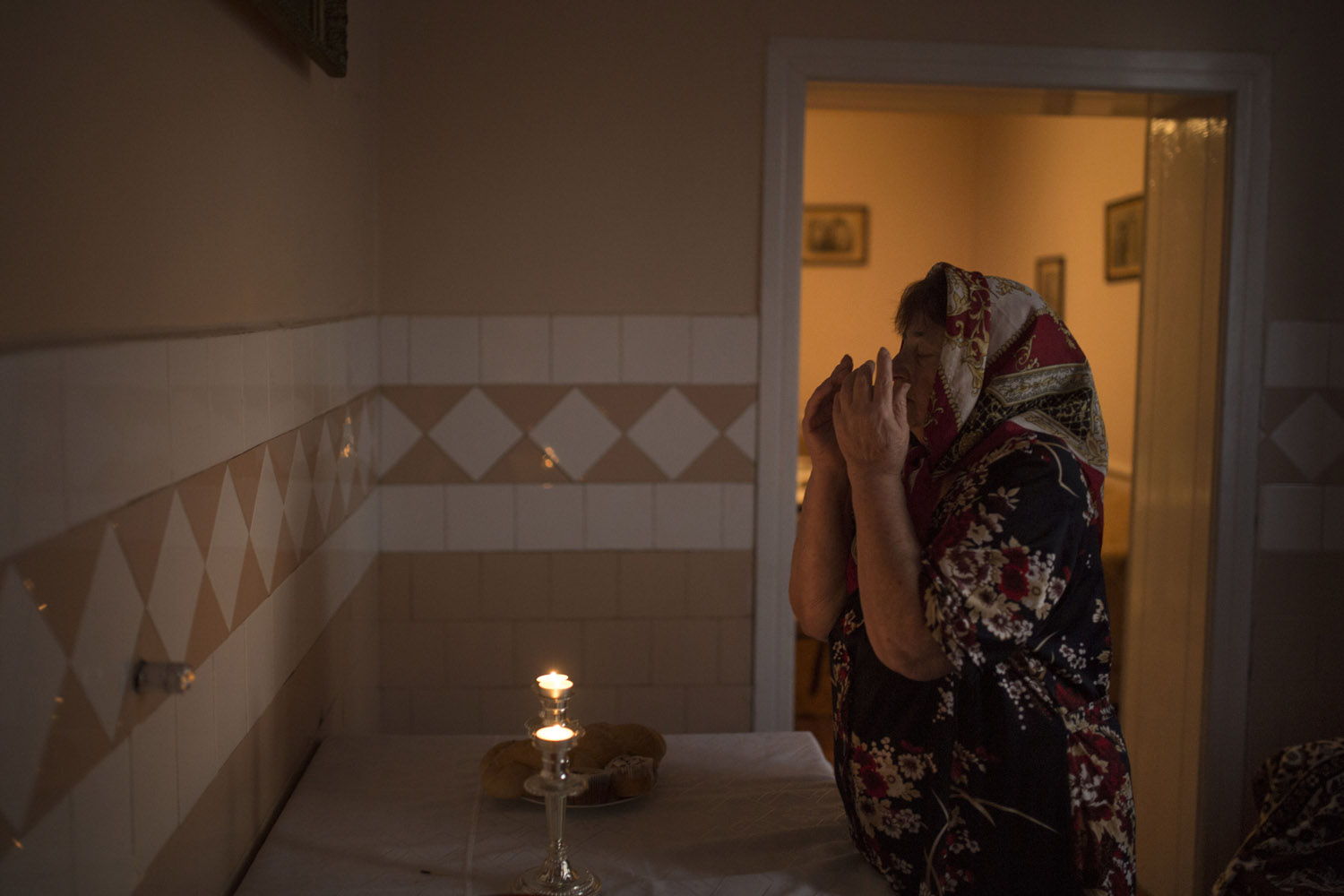
published on Al Jazeera
See all the photos here.